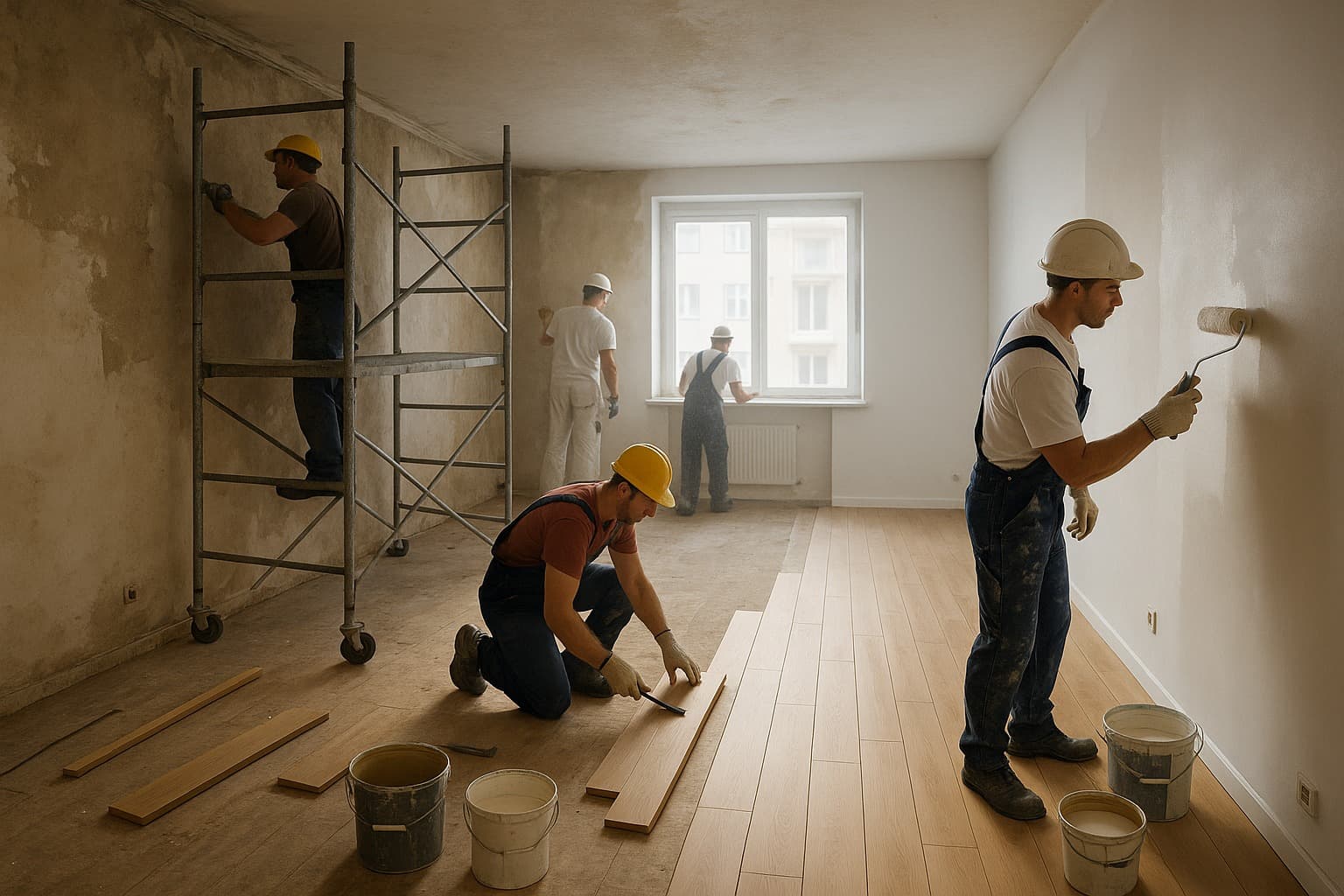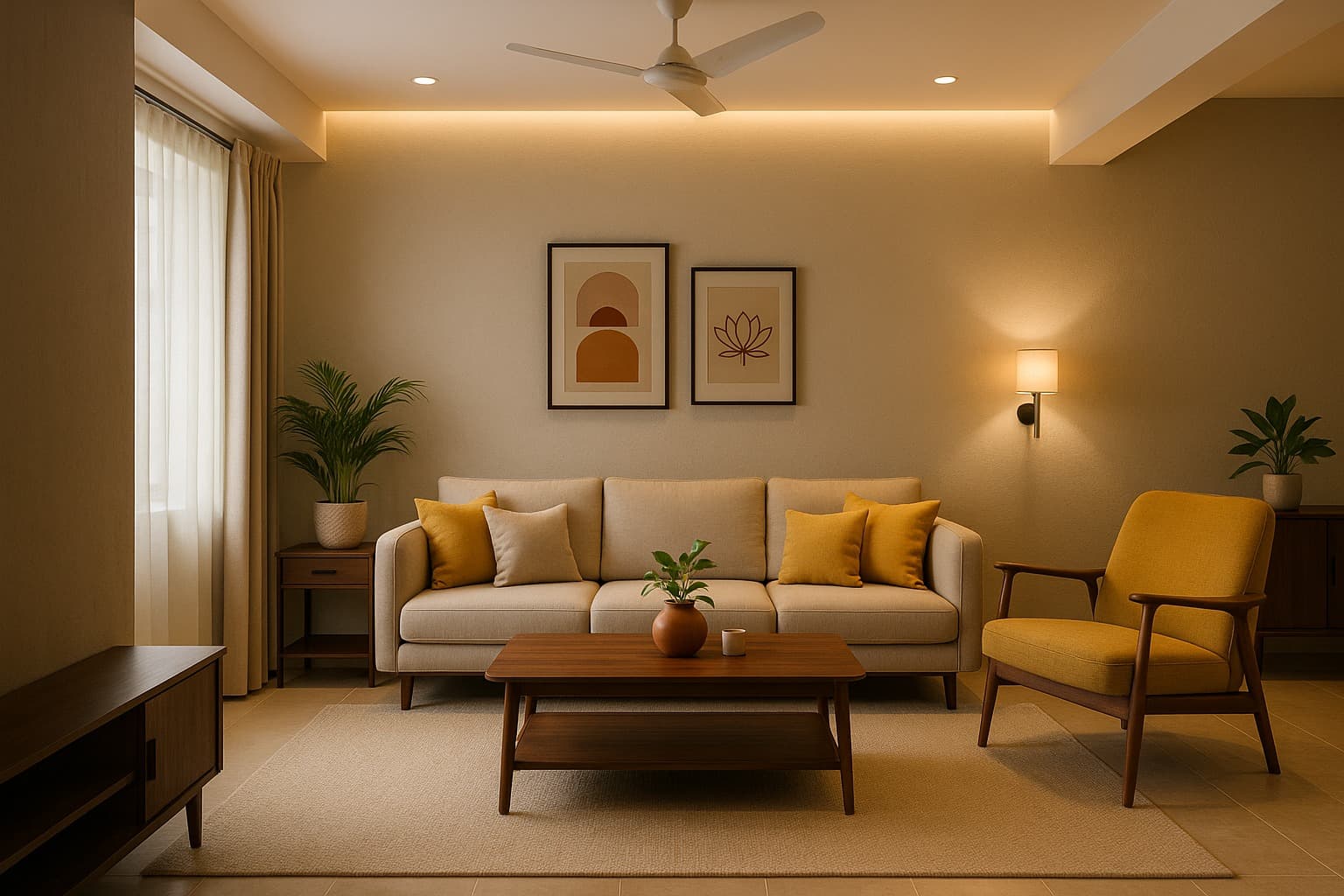Buying a Fixer-Upper: A Comprehensive Guide for Indian Homebuyers
Summary
Buying a fixer-upper in India offers customization and potential value increase but demands careful planning. Inspect thoroughly, budget realistically, and work with pros to transform a property into your dream home.

Buying a Fixer-Upper: What to Watch Out For
Buying a home is one of life’s most exciting milestones. You walk through doors that could become the backdrop of countless memories, imagine dinners in your dream kitchen, and picture weekends spent in cozy corners of your own space. But sometimes, the home you fall in love with isn’t picture-perfect. Maybe it needs some TLC, fresh paint, or even major repairs. These homes, known as fixer-upper homes, can feel both like a challenge and an opportunity.
In India, many homebuyers are drawn to renovation properties because they offer lower initial costs and the chance to create a personalized home. But buying a fixer-upper isn’t just about grabbing a bargain — it’s about careful planning, knowing what to look out for, and understanding the journey ahead.
1. Understanding Fixer-Upper Homes
A fixer-upper home is a property that needs repairs, updates, or modernization. Some homes might only need cosmetic improvements like painting or new flooring, while others may require structural work or plumbing and electrical fixes.
Buying a fixer-upper is not just a financial decision; it’s an emotional and practical one. You’re buying potential — a chance to shape a house into the home of your dreams — but you also take on responsibility, cost, and time. Understanding the cost of renovating old property in India helps in evaluating whether the home is worth the effort.
2. Pros and Cons of Buying a Fixer-Upper
Before diving in, it’s important to weigh the pros and cons of buying old homes to renovate.
Pros:
Lower Purchase Price: Fixer-uppers often cost less than move-in-ready homes.
Creative Freedom: Renovate the home to fit your exact style and needs.
Potential Appreciation: Renovated homes can significantly increase in value.
Less Competition: Many buyers avoid these homes, giving you more negotiating power.
Cons:
Unexpected Costs: Renovations can be pricier than anticipated.
Time-Intensive: Projects take weeks or months to complete.
Stress Factor: Coordinating contractors, managing permits, and dealing with repairs can be overwhelming.
Hidden Issues: Structural, plumbing, or electrical problems may not be visible at first glance.
Balancing these factors ensures you approach the purchase with both excitement and caution.

3. What to Check Before Buying
A thorough inspection is the backbone of a smart fixer-upper purchase. When buying a fixer-upper home in India, pay attention to:
Structural Integrity: Look for foundation cracks, water damage, and roof condition.
Plumbing and Electrical Systems: Old pipes and wiring may require replacement.
Pest Infestation: Termites or other pests can cause significant hidden damage.
Legal Clearances: Ensure the property has a clean title and all approvals.
Neighborhood and Amenities: Consider location, safety, schools, markets, and transport.
This checklist for purchasing a renovation or resale property helps prevent unexpected problems and ensures you can realistically plan renovations.
4. Estimating Renovation Costs
One of the biggest mistakes buyers make is underestimating renovation costs. Here’s how to plan:
Get Professional Quotes: Architects or contractors can provide accurate cost estimates.
Include Contingencies: Budget at least 10–20% extra for unforeseen issues.
Prioritize Repairs: Identify must-do repairs versus optional upgrades.
Material Choices: Opt for durable, cost-effective materials.
Knowing how to estimate renovation cost before buying old property helps avoid financial stress and ensures your plans are feasible.
5. Financing a Fixer-Upper
Funding a fixer-upper requires smart planning. Options include:
Home Improvement Loans: Designed specifically for renovations, often at lower interest than personal loans.
Top-Up Loans: Add extra funds to your existing home loan to cover renovations.
Personal Loans or Savings: For smaller projects or cosmetic upgrades.
By planning finances carefully, you can fund renovations without compromising other goals.
6. Working With Professionals
Buying and renovating a fixer-upper is not a solo journey. Professionals can save time, money, and stress:
Home Inspectors: Detect hidden problems before you buy.

Contractors and Architects: Provide design solutions, cost estimates, and guidance.
Legal Experts: Ensure compliance, clear titles, and approvals.
Their expertise is invaluable for avoiding costly mistakes.
7. Common Mistakes to Avoid
Even experienced buyers can slip up. Avoid these pitfalls:
Skipping Inspections: Hidden issues can be costly down the road.
Underestimating Costs: Always plan for contingencies.
Ignoring Legal Matters: Pending approvals or unclear titles can cause serious problems.
Rushing Renovations: Phased, planned projects reduce stress and ensure quality.
By being careful and systematic, you set yourself up for a successful project.
8. Emotional Perspective
Renovating a fixer-upper is as much about emotion as finance. Imagine transforming a worn-out living room into a cozy haven or turning a neglected backyard into a serene retreat. The pride, satisfaction, and personal connection you feel with a renovated home are unparalleled. This is the human side of buying a renovation property — creating a home that truly reflects you.
It’s not just an investment; it’s about lifestyle, happiness, and turning a house into your sanctuary.
9. Real-Life Example
Consider Arjun, who purchased a 20-year-old flat in Pune. The apartment needed painting, plumbing fixes, and a modernized kitchen. He carefully planned a budget, hired trusted contractors, and phased the renovations over six months. Today, his flat is vibrant, functional, and modern — and its market value has increased substantially. By following fixer-upper home investment tips, he turned a challenging purchase into a rewarding success.
Final Thoughts
Buying a fixer-upper in India can be both a savvy investment and a way to create a personalized home. But it requires careful planning, thorough inspections, realistic budgeting, and working with the right professionals. Understanding the pros and cons of buying old homes to renovate, estimating costs of renovating old property in India, and following a structured approach helps avoid common mistakes.
When done thoughtfully, a fixer-upper transforms a property into a home that’s functional, stylish, and full of personality — all while offering potential financial benefits. Patience, preparation, and vision are your best allies in this journey.
Summary (100 words)
Buying a fixer-upper home in India offers a chance to customize a property, save on initial costs, and potentially increase its value. However, it comes with risks including hidden structural issues, unexpected renovation expenses, and time-intensive projects. Before buying, inspect structural, plumbing, and electrical systems, check legal clearances, and research the neighborhood. Estimate renovation costs accurately and budget for contingencies. Finance smartly using home improvement loans, top-up loans, or personal savings. By avoiding common mistakes and working with professionals, homeowners can successfully transform a renovation property into a comfortable, stylish, and high-value dream home.
